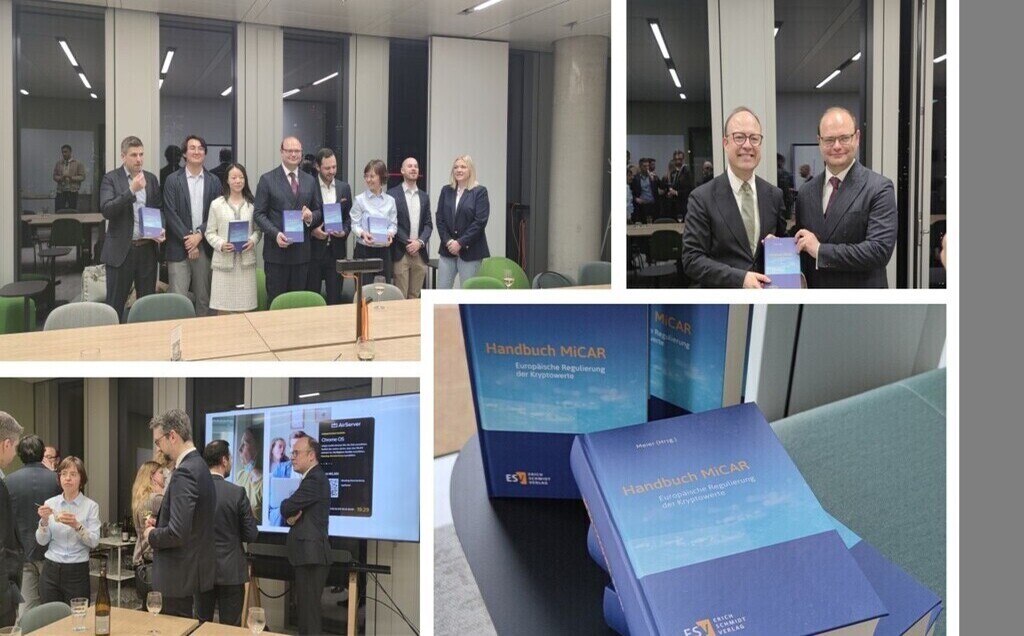Blockchain technology has established itself as a promising technical infrastructure for numerous applications since the emergence of the smart contract economy. Investment products and capital market issues in particular are now increasingly being mapped and processed via smart contracts implemented on blockchains. The tokenization of so-called real-world assets (RWA tokens) or rights is also increasingly being implemented to enable the digital transfer of the underlying assets. One of the biggest challenges of blockchain-based projects, however, is the fact that blockchains are essentially closed networks that are not compatible with each other. The use of bitcoins or their equivalent value to interact with a smart contract implemented on the Ethereum blockchain, for example, is not technically possible at first glance. So-called token bridges can provide a remedy in such cases. These are smart contracts that enable their users to use value units from other blockchain infrastructures on other blockchains. Technically, this works by users transferring cryptocurrencies of a certain type to a blockchain address managed by the token bridge in order to receive wrapped tokens in return, which are generated on the target blockchain and can therefore be used there. Wrapped tokens usually represent the value of the deposited cryptocurrency at a ratio of 1:1.
Can Wrapped Tokens Represent Asset-Referenced Tokens?
Under MiCAR, digital representations of values or rights that can be transferred and stored electronically using distributed ledger technology or similar technology are regulated as crypto assets. Wrapped tokens certainly meet these very broadly formulated requirements. However, MiCAR also recognizes special forms of crypto assets that may be associated with further obligations for issuers and providers of crypto services. An asset-referenced token (ART) exists, for example, if a crypto asset attempts to maintain a stable value by referring to another asset or another right or a combination thereof, including one or more official currencies. As wrapped tokens usually represent the value of another crypto asset on a 1:1 basis, they will in most cases qualify as ART. For the issuer of the wrapped token, this may mean in particular that the wrapped token may not be issued without the necessary authorization under MiCAR. In addition, the issuer of ART is obliged to create an asset reserve, which must be held in accordance with the specific requirements set out in MiCAR. Furthermore, depending on the design of the underlying smart contracts, providers of token bridges may trigger licensing obligations under MiCAR. For example, the safekeeping of deposited crypto assets may constitute crypto custody subject to authorization. The retransfer of deposited crypto assets may also be subject to authorization under MiCAR if it is to be carried out to a different blockchain address than the one from which the crypto assets were originally transferred to the token bridge.
Can Token Bridge Models Also Be Realized in an Unregulated Way?
Providers of token bridges and issuers of wrapped tokens may therefore be subject to far-reaching regulatory obligations. One way to avoid these considerable administrative burdens may be to decentralize the token bridge and the issuance of wrapped tokens to such an extent that there is no sufficiently responsible person for the operation of the token bridge and the issuance of wrapped tokens. In this respect, it would be necessary for the token bridge to function in a completely decentralized manner and for no identifiable person to have control or influence over the operation or issuance of wrapped tokens. In this case, there would be no addressee for the regulatory obligations provided for under MiCAR and the token bridge would be able to operate outside the scope of MiCAR.
Attorney Lutz Auffenberg, LL.M. (London)
The lawyer responsible for questions relating to the qualification of tokens under MiCAR at our law firm is Attorney Lutz Auffenberg, LL.M. (London).
subscribe to Newsletter






